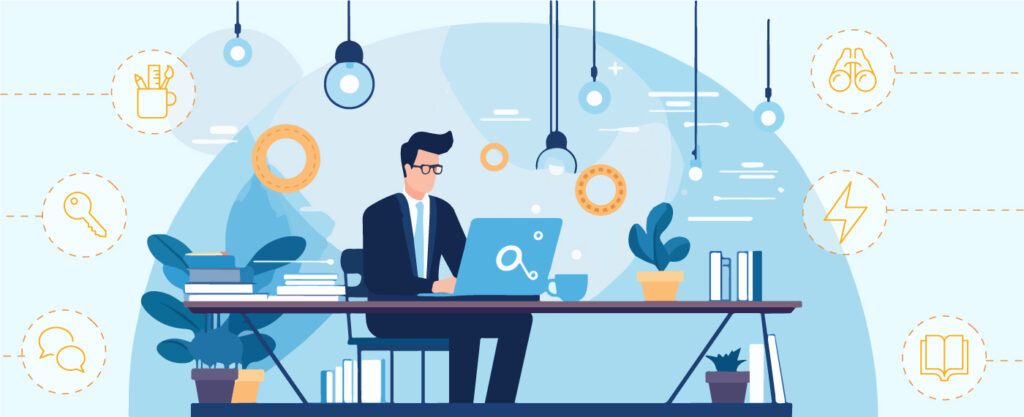As AI continues to reshape the workplace, employees are not passive observers but active participants in this technological revolution. In this blog post, we’ll explore how forward-thinking individuals are incorporating AI into their daily routines, unlocking new levels of efficiency and productivity which can contribute to a more rewarding and effective work experience.
Automation. One of the most tangible ways employees are incorporating AI in their workday is through task automation. Mundane and repetitive tasks that once consumed hours can now be streamlined with AI-powered tools. From automating data entry to managing routine emails, employees are embracing AI as a digital ally that allows them to focus on more complex, value-added aspects of their work. In a previous post we shared a real-world example of how AI automation assisted Velosys developers in reviewing and analyzing copious amounts of documentation as part of a client solution.
Creativity. AI is not just an automation tool; it’s also a catalyst for creativity. Employees in various fields are exploring AI tools to generate innovative solutions, create dynamic content, and even enhance design processes. Machine learning algorithms are assisting in ideation and problem-solving, pushing the boundaries of what is possible in terms of creativity and innovation.
Communication. Collaboration tools and communication channels are being transformed by AI. Employees are utilizing AI-driven collaboration platforms that facilitate seamless communication, project management, and information sharing. Virtual assistants and chatbots contribute to a more efficient workflow, providing instant answers to queries and streamlining internal communication.
Decision-making. AI is proving to be a valuable ally in the decision-making process. With advanced analytics and predictive modeling, employees can access actionable insights derived from vast amounts of data. Finance professionals, for instance, are utilizing AI algorithms to analyze market trends and make informed investment decisions. This not only improves accuracy but also enables faster responses to dynamic market conditions.
Learning. In the realm of professional development, employees are turning to AI for personalized learning experiences. AI algorithms analyze individual learning styles, preferences, and performance data to tailor training programs. This not only ensures that employees receive targeted and relevant content but also fosters a culture of continuous learning within the organization.
AR and VR. Employees are increasingly exploring the immersive possibilities of AI through AR and VR technologies. From virtual meetings and training simulations to collaborative design sessions, AI-powered AR and VR applications are providing employees with new and engaging ways to interact with their work and colleagues. In industries where technology plays a significant role, employees using AI can contribute to their organization’s competitive advantage. Staying abreast of technological advancements can position employees and their teams as leaders in their field.
The widespread adoption of AI in the workplace does not come without challenges. Ethical considerations, such as data privacy, algorithmic bias, and job displacement, must be addressed. Organizations need to establish transparent policies, ensure responsible AI use, and prioritize employee well-being as they navigate the evolving landscape of technology in the workplace.

